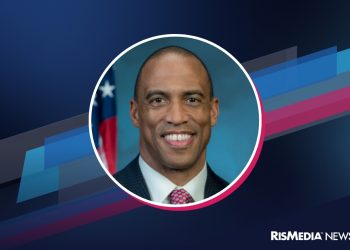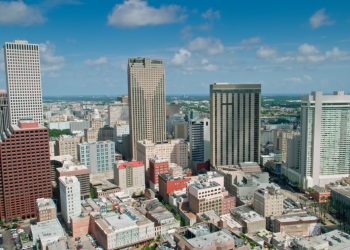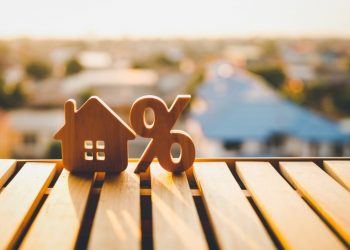RISMEDIA, March 11, 2009-(MCT)-Like many people in the Bay Area, Odette Essary was a longtime renter.
And like many renters in the Bay Area, she recently became a first-time homeowner due to home prices sinking to their lowest level in almost a decade and federally-insured loans that more and more borrowers are using.
Essary, 46, moved into her two-bedroom Union City townhouse with her 14-year-old son, Nathan, in December. The $225,000 price she paid for her home is almost half the $409,000 price tag that a comparable property sold for two years earlier.
“It was my son’s birthday as well, the day we picked up the key,” recalled Essary, who works at Stanford University as a course and events coordinator, a job that pays $44,000 a year. “It really was just perfect for what I needed … I have always paid somebody else’s mortgage and never thought I could afford it.”
One of the things Essary most likes about having her own home is an outside space to call her own. After moving in, Essary planted rosebushes in the yard-front and back. “I planted rose bushes all over. There’s seven of them,” she said.
Essary obtained a government-insured Federal Housing Administration loan last year to buy her home. The 30-year-fixed-rate loan has a 6% interest rate.
The government does not make the loan. But it does insure against a borrower not paying off the loan. To that end, mortgage insurance is included in the cost of an FHA-backed loan, with the premiums paid by the borrower. The mortgage insurance requirement goes away once there is a 78% equity stake in the home.
To help swing the just-under five percent down payment required for her loan, Essary cashed in most of her workplace retirement fund, which she is now paying back through payroll deductions.
The down payment requirement for FHA loans taken out in 2009 is even lower: 3.5%. Of course, buyers have the option of making a larger down payment.
“We are seeing a lot of those loans. Basically, because the down payment is so low it’s very attractive for buyers,” said Jeff Pereyda, a broker/Realtor at Fremont-based Tri-City Real Estate Brokers Inc. who helped Essary buy her townhouse.
The home that Essary bought was not a foreclosure. However, the large number of foreclosures for sale in the Bay Area had an impact on the price she ended up paying, said Pereyda.
“The market is what the market is,” he said. “(The seller) had to reduce the price because everything around her was so low … Definitely, it was foreclosure driven although it was not a foreclosure sale.”
Like many home buyers, Essary does not believe she would have been able to buy a home unless prices had dropped substantially.
“Not even close. I’m a single parent on one income,” she said.
A couple years ago, Essary looked at a two-bedroom condo in Union City that was going for $350,000 but that was too much for her to afford.
“I didn’t even try,” she said.
So she waited. And then started looking again after prices started to fall about a year ago. And then bought. In fact, Essary is really glad she waited, given that falling home prices made it possible for her to buy a roomy townhouse last year instead of a smaller condo two years ago.
The FHA loan that Essary and other home buyers are turning too were once few and far between back in the day when housing prices were soaring and loans were much easier to get. Nowadays, FHA loans are a fast-growing segment of the lending market, which tightened up borrowing standards in response to the subprime mortgage meltdown that started in 2007.
In January, FHA loans accounted for nearly 25% of mortgages to buy homes in the Bay Area, according to MDA DataQuick. A year ago, that number was under one percent.
January’s median price sales of new and existing homes in the Bay Area was $300,000, or almost half what it was a year ago and the lowest since December 1999 when the median was $299,000.The median price is the point at which half of the homes sell for more and half sell for less.
As home prices have fallen, so too have the number of first-time home buyers.
In the fourth quarter 2008, 47% of Bay Area households could afford the $414,070 entry-level price for an existing single-family house, according to the California Realtors Association. That’s twice the 23% rate in the fourth quarter 2007. It’s also the highest level since the Association started the entry-level home buying index in the first quarter of 2003, when the rate was 41% in the Bay Area.
For the fourth quarter 2008, the index assumes that a Bay Area household has a yearly income of at least $81,600 and made a 10% down payment on the loan.
FHA Loan Basics
The Federal Housing Administration — part of the Dept. of Housing and Urban Development — insures FHA loans, so your lender can offer you a better deal. In addition to low down payments and low closing costs, FHA loans allow for lower credit scores and easier qualifying criteria than conventional loans. FHA loans require the owner to live in the home.
FHA loans are not limited to first-time buyers. While there are no income restrictions that apply, the borrower has to meet lending criteria established by an FHA-approved lender.
In 2009, the minimum down payment for taking out an FHA loan is 3.5% of the home’s purchase price. FHA loan limits for 2009 are $729,750 in Alameda, Contra Costa and San Mateo counties, $557,500 in Solano County and $488,750 in San Joaquin County.
Got to www.hud.gov/buying/loans.cfm or call the FHA Resource Center at 1-800-225-5342 for more details.
Source: FHA and HUD
FHA requires a mortgage insurance premium (MIP) for its home buying programs. An up front premium of 1.5% of the loan amount is paid at closing and can be financed into the mortgage amount. In addition, there is a monthly MIP amount of .50%. Condos do not require up front MIP — only monthly MIP.
The mortgage insurance premium paid on an FHA loan is always significantly higher than on a conventional program. On an FHA loan the borrower will be charged a mortgage insurance premium equal to 1.5% of the purchase price of the property and a renewal premium of .50% in subsequent years. By contrast the mortgage insurance premium charged at closing on a conventional program is as low as .50% (with 10% down payment) with renewal rate in subsequent years as low as .30% in subsequent years.
Source: www.mortgage101.com
Copyright © 2009, The Oakland Tribune, Calif.
Distributed by McClatchy-Tribune Information Services.










